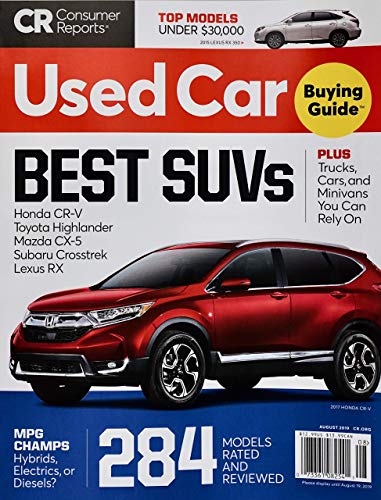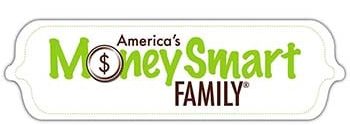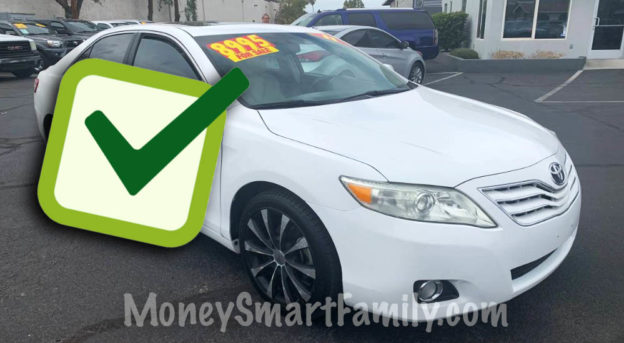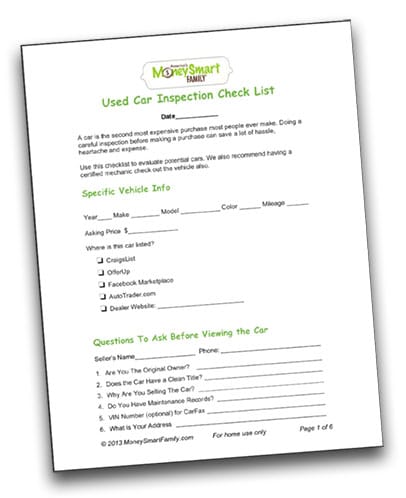We created this used car buying checklist to help our young adult kids evaluate their next car purchase.
With the recent rise in the cost of used cars due to Covid shortages, and 2024 supply chain problems. It’s more important now to carefully evaluate the car you want to buy.
We’ve always bought used cars from private sellers in Arizona. Our state doesn’t charge sales tax on cars purchased from individuals and this saves us 8.6 percent on the purchase price.
But we’re always careful when dealing with private party sales and follow the tips in this article. We also use the checklist at the bottom to make sure we don’t buy a lemon
MoneySmart Family Used Car Checklist: This easy-to-use, Used Car Checklist shows you the things you should check when you inspect a car you are interested in buying. You’ll be given step-by-step instructions on:
- What to bring to an inspection
- How to check the exterior,
- Interior features inspection,
- Engine fluids and belts inspection,
- What to look for on the tires
- How to test drive the car
Our Car Buying History
TABLE OF CONTENTS
- 1 Our Car Buying History
- 2 Step 1 — Save Your Money First
- 3 Step 2 — Research Used Cars Using These Tools
- 4 Step 3 — Check the Reliability Index of the Car
- 5 Step 4 — Comparison shopping
- 6 Step 5 — Initial Phone Questions to Ask The Seller
- 7 Step 6 — Inspecting The Car Before You Buy
- 8 Interviewing a Private Owner
- 9 Step 7 — Make an Offer they Can’t Refuse
- 10 Enjoy The Drive Home with Your New Used Car!
We’ve never had a car payment and always purchased good used cars. Since 1982 we’ve bought a total of 11 used cars for us and some of our kids. We’ve also helped several friends who were looking for a used car with their purchases.
Our friend Jody Humber, who is a financial planner calculated that you could save more than $125,000 over the course of 30 years if you buy gently used cars for cash rather than financing a new car.
But how can you safely and confidently buy a used car from a private party without getting taken advantage of?
Great question.
Just follow our 7 tips and you’ll end up with a great used car at a great price.
Here’s how we’ve done it.
Be sure to get a copy of our Use Car Inspection Checklist at the bottom of the page.
Step 1 — Save Your Money First
Saving for car replacement is a regular part of our budgeting system. We’ve learned not to start looking at cars until almost all of the money is in the bank.
The thinking behind this is that we might find a great deal and be tempted to buy on credit and accrue debt, rather than sticking with our cash-only policy.
RELATED ARTICLE: How Long Should I Keep My Car?
Step 2 — Research Used Cars Using These Tools
Once we’ve got a good pile stashed away, we start step two. Based on the amount of money we have saved in our auto replacement account, we do a quick review of the classified ads for vehicles in that price range.
We check the following sources and build a spreadsheet to track the year, mileage and asking price:
This will help us determine if we have saved enough money to purchase the year and make of a vehicle that we’re interested in.
Step 3 — Check the Reliability Index of the Car
A few years back, we wanted to replace our Ford conversion van that seated seven. We’d saved a good amount of money over an eight-year period and started our research for a larger van that would seat 12. We use two different sources to check the reliability of the vehicle we want to purchase.
Consumer Reports
First, we check out Consumer Reports’ Annual Used Car Reliability Guide. Their annual guide provides information for the past 10 years of each vehicle.
They evaluate things like the electrical system, power train, engine, mileage, repair costs, body integrity and much more.
Most libraries have Consumer Reports available as reference materials in the library and some offer access to the electronic version online. But we think that subscribing to Consumer Reports is a good idea.

Each year they published a use car buying guide that covers several years of used car ratings and evaluations. It’s our go-to source when we want to know of any potential problems with a car we’re interested in.
Consumer Reports doesn’t accept any advertising and as a result, provides unbiased evaluations of all kinds of products.
Get a Mechanic’s Opinion
Next, we called our faithful mechanic—who has serviced our van for 10 years—to get his opinion on the types of vans that he’d serviced and those he thought were most reliable.
Our next step was to develop a price comparison sheet.
Step 4 — Comparison shopping
Because buying a car is a major expense requiring extensive research, we created a folder to contain all of the information we would collect. We scoured CraigsList, OfferUp, and AutoTrader.com.
Next, we created a comparison sheet of several vehicles in our price range, which included the price, mileage, year, special features, and contact information for the seller.
We called the ones that interested us and asked several questions (see Step 5).
The first page of the Free Checklist is to gather information about each car you’re interested in looking at.
Step 5 — Initial Phone Questions to Ask The Seller
- Is it still available? If the car has already sold, ask for the selling price and any other details the owner will share.
- Are you the original owner?
- Why are you selling this vehicle?
- Does it have a clean title? (not a salvage title, which would indicate it has been considered a total loss by an insurance company either as a result of theft or damage. Many people or repair shops purchase salvaged vehicles at auction and fix them up to resell).
- Car Warranty: is the car still under a manufacturer’s warranty or have you purchased an extended warranty? Is the warranty transferrable?
These questions gave us insight into the owner and the car and helped us determine if we wanted to move to the next step and see the vehicle in person. Learning about the integrity of the owner also may determine what may be true about the car.
Ideally, we like to purchase our used cars from the first or second owner, not someone who is buying and reselling cars as a hobby or side job.
While the classified ads showed us what cars are selling for in our area, the Kelley Blue Book (www.kbb.com) and National Automobile Dealers Association (NADA, www.nada.com) Web sites show us what experts think the used car value should be.
By inputting information about the year, make, model, and features of each car you are researching, the Web sites will calculate a price you should expect to pay either from a dealer or from a private party.
Knowing a Car’s Value
Knowing these values can give you the upper hand in negotiations. For example, if someone wants to sell a car for $20,000 when Kelley Blue Book says it’s only worth $15,000 you might be able to get the owner to drop his price.
It’s also possible that if the difference in pricing is great you are missing some features, mileage, or upgrades.
After a few weeks of data gathering, we determined that we could afford a four- or five-year-old half-ton or three-quarter-ton full-size window van. Armed with this information and our classified research, we were ready to negotiate when we found a vehicle that we wanted to buy.
Step 6 — Inspecting The Car Before You Buy
Once we found a van that fit our specifications, we made an appointment with the owner.
Here is a short checklist of things that we take with us and look for when inspecting a potential purchase.
- Bring any previous research and some blank paper to write notes on.
- Bring a mirror to check the underside of the vehicle— look for oil or transmission leaks on engine parts and dents or scrape marks indicating that it has been driven over rough roads and may have sustained other damage.
- Bring a strong magnet and a piece of cloth. Cover your magnet with the cloth and check out different areas on the car to see if the magnet sticks to the metal.If it sticks in some areas and not in others, chances are that the car has sustained body damage and has been repaired with Bondo or some other filler material. If there are extensive repairs of this type we usually pass on the car.
- Bring a dollar bill. Open each door and hang your dollar bill over the top of the door and close it. As you pull on it, it should be snug. Check a couple of places on each door. If it slips out of some areas, then the car has probably been damaged.
Exterior Inspection
Walk around the car and review the following items:
- Always inspect the car in the daylight; Scan down the side of the car to look for paint irregularities or surface unevenness.
- Bodywork Examination: Look for mismatched paint, overspray, or gaps in body panels indicating previous repairs.
- Rust and Corrosion: Check not just for surface rust but also for structural rust that could compromise safety.
- Leak Inspection: Look for signs of leaks or puddles under the vehicle that could indicate serious issues.
- Lighting and Glass: Ensure all exterior lights work and check for cracks or chips in windows and mirrors.
- Tire Inspection Detail: In addition to tread depth and wear, check for age of the tires since old tires can be a safety hazard even with good tread. Evaluate the wear pattern. If the outside or inside edges are worn, it is an indication of alignment problems.
- Check Doors: using your dollar bill. Uneven door closure can be an indication of body damage.
Look Under The Hood
When inspecting under the hood of a used car, it’s crucial to check various components and systems for signs of wear, maintenance issues, or potential problems. Here’s what to look for:
- Engine Oil Condition: Pull out the dipstick, wipe it clean, reinsert it, and then pull it out again to check the oil level and quality. The oil should be within the proper range and not look gritty, overly thick, or milky, as these can indicate maintenance neglect or serious engine issues.
- Coolant/Antifreeze Level and Condition: Check the coolant reservoir; the liquid should be within the minimum and maximum marks. The coolant should be clean and free of oil, indicating a healthy cooling system. Oil in the coolant could suggest a blown head gasket.
- Belts and Hoses: Inspect all visible belts and hoses for signs of wear, such as cracks, fraying, or brittleness. Spongy hoses or those with leaks need replacing.
- Battery Condition: Examine the battery for any signs of corrosion around the terminals, which can indicate leaking or an old battery. Check the battery’s date if visible, as most have a life expectancy of 3-5 years.
- Fluid Leaks: Look for any signs of leaks under the engine, such as oil, coolant, or other fluid spots. Fresh leaks or stains on the pavement where the car is parked can also indicate problems.
- Radiator and Condenser: Check the radiator and condenser (in front of the radiator) for any bent fins, signs of leaks, or damage. These components are crucial for the car’s cooling system and air conditioning.
- Transmission Fluid: If the car has an automatic transmission with a dipstick, check the fluid level and condition. The fluid should be a bright red color and not smell burnt. Dark brown color or a burnt smell can indicate transmission issues.
- Power Steering Fluid: Check the power steering fluid level and condition. Low fluid levels or a burnt smell can indicate leaks or wear in the power steering system.
- Brake Fluid Reservoir: Ensure the brake fluid is within the recommended level and check for cleanliness. Dirty or low brake fluid can indicate leaks or the need for brake system maintenance.
- Overall Cleanliness: A clean and well-maintained engine bay often reflects careful ownership and regular maintenance. However, be wary of excessively clean engines in older cars, as this might indicate an attempt to hide leaks or other problems.
Inspecting these components under the hood can provide valuable insights into the car’s condition and maintenance history, aiding in making an informed purchase decision.
Interior and Functional Checks
- Electronic and Feature Check: Test all electronic features, including navigation, infotainment system, and Bluetooth connectivity.
- Air Conditioning and Heater: Verify the effectiveness of the HVAC system in both heating and cooling modes.
- Odor Inspection: Beyond smoke or mildew, check for any chemical or burning smells that could indicate hidden problems.
- Upholstery and Trim: Examine for excessive wear, tears, or damage to seats and interior trim that could suggest rough use.
- Instrument Panel and Controls: Confirm that all instrument panel indicators function correctly and that controls operate smoothly.
Test Drive
- Noise Assessment: Listen for any abnormal sounds from the engine, transmission, and suspension, especially under different driving conditions.
- Acceleration and Power Delivery: Check for smooth acceleration and adequate power, noting any hesitation or misfires.
- Handling and Stability: Evaluate the vehicle’s handling on turns, checking for any drift or instability.
- Braking Performance: Assess stopping power and responsiveness, noting any vibration or pulling during braking.
- Transmission Performance: For automatics, note any delayed shifts or slipping; for manuals, check for smooth gear transitions and clutch operation.
Additional Considerations
- Frame Damage Check: Use a magnet to detect filler in body panels and inspect the undercarriage for signs of major repair or frame damage.
- Emission Compliance: Ensure the vehicle meets local emissions standards to avoid potential registration issues.
- Aftermarket Modifications: Be cautious of aftermarket parts that could affect performance or void warranties.
- Insurance and Registration Costs: Consider potential costs for insurance and registration, as these can vary based on the vehicle’s history and class.
- Professional Inspection Recommendation: If unsure, a pre-purchase inspection by a certified mechanic can identify issues you might miss.

Download our comprehensive 7-page inspection checklist at the bottom of the page
Interviewing a Private Owner
When you’re face-to-face with the private owner, you’ll want to ask him some probing questions as well, such as
- How has the car been maintained?
- Can we see the maintenance records?
- What repairs have been done?
- Where has this car been driven – on the highway, off-road or around town? (On the highway is best.)
- What accidents or damage has this car had? (The fewer, the better.)
- Can we see the title? When we were helping our son buy his first car – yes, he paid cash – we asked the owner about the title but didn’t see it until we had agreed on a price.
- We knew from the inspection we performed that the car had been damaged, but we didn’t know that it had a salvage title.
- Even though the car was in great shape, when we discovered the title status, we negotiated for a greater price reduction.
Test Drive the Car
If you’re satisfied by the visual inspection and by the owner’s answers, take the car on a ride.
Listen for any unusual noises, clunking over bumps, squealing when turning the steering wheel. If the car pulls to the left or right on a flat surface, new tires could have recently been installed to cover up an alignment problem.
Mechanics Evaluation
If the test spin goes well, arrange for your mechanic to look at the car. It’s worth the money to spend $50 to $100 to have a thorough inspection and a non-emotional opinion. One auto repair shop where we go for “new car checks” also gives us a CarFax Report on the vehicle.
Get a CarFax Report
A CarFax report provides a detailed history of a used vehicle, covering aspects such as previous ownership, accident history, service records, and mileage verification. This information helps potential buyers assess the car’s condition and reliability, making it an essential tool for making an informed decision when considering a used car purchase. You can order a CarFax Report with the VIN or license plate number and State for about $50.
Step 7 — Make an Offer they Can’t Refuse
If your mechanic gives the car a clean bill of health, it’s time to talk about money. Don’t be the first one to state a price.
Go over any drawbacks your mechanic discovered or that you uncovered during your inspection and then ask the seller what their best price is.
You can counter their offer based on your research and knowledge of the marketplace.
Enjoy The Drive Home with Your New Used Car!
How to pay for the car and transfer the title varies from state to state. In the past, we would get a cashier’s check and have the title signed over to us. With the most recent car purchase we made, the owner met us at a branch of our bank where we withdrew and gave him cash, as was his preference.
Years ago, when we drove home with our daughter Becky after she purchased her first car (a Toyota Tacoma 4-door pickup truck) we celebrated by playing the theme song from Raiders of the Lost Ark. She paid cash for her truck and 3 years later sold it for more than the purchase price!
For more great money-saving tips with cars, check out the list of car-related topic pages!
Download our Free Used Car Inspection Checklist
If you have any tips for inspecting a used car, please leave them in the comments below!



I love that you mentioned to put aside money for a new car in your savings and budget. I do this, so when my old car completely broke, I was able to avoid going into debt. My father has been looking to buy a used car from our neighbors, so these tips could really help us out. Is there anything else he should keep in mind?
Thank you for all the tips on buying a used vehicle. My husband really wants to buy a used truck, but he doesn’t know what to do. I really like your tip about making sure to compare several vehicles in your price range. I think that would be a great idea.
I totally agree with you mentioned how you should have the opinion of a mechanic when looking for a good part for your car. It is important to understand that doing some research can help you find the best parts for your vehicle. Personally, I would also want to take the time to consider the type of car I have in order to find the parts it needs.